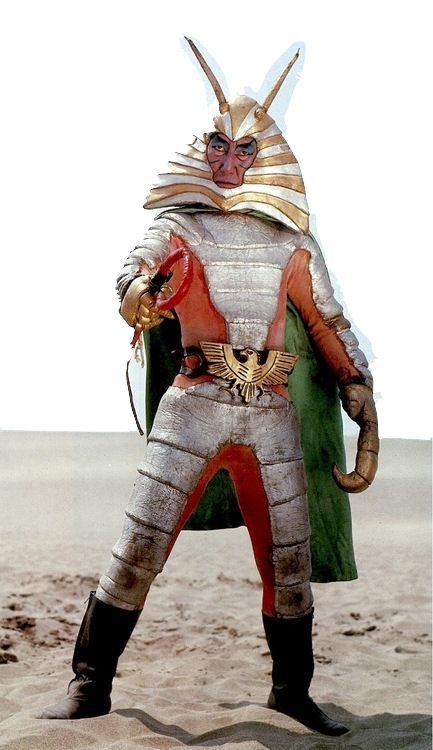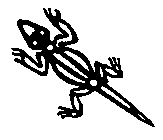Structural onto-anthropology on "The Masked Rider"

仮面ライダーの構造論的解釈
Structural onto-anthropology on "The Masked Rider"

Kamen Rider (仮面ライダー, Kamen Raidā, Masked Rider)
is a tokusatsu superhero television series and weekly science fiction
manga created by manga artist Shotaro Ishinomori. The series takes
place in a world plagued by Shocker, a mysterious worldwide terrorist
organization formed by remaining members of the Nazis. To further its
plans for world domination, Shocker recruited its agents through
kidnapping, turning their victims into mutant cyborgs and, ultimately,
brainwashing them. However, one victim named Takeshi Hongo escaped just
before the final brainwashing. With his sanity and moral conscience
intact, Takeshi battled Shocker's minions as the grasshopper-themed
cyborg (改造人間, kaizō ningen) superhero Kamen Rider. Another victim of
the cyborg process, freelance photographer Hayato Ichimonji, became
Kamen Rider Two after Kamen Rider, who eventually renamed himself as
"Kamen Rider One", saved him from Shocker's brainwashing. Assisted by
motorcycle race team manager Tobei Tachibana and FBI agent Kazuya Taki,
the Kamen Riders fought in both solo and partnered missions against
Shocker and its replacement organization, Gelshocker.- Kamen Rider (1971 TV series).
[構造論]
ボロロの神話のレヴィ=ストロース解釈
(1)昼間に妻が、森の中で妻の兄弟に犯されたことを知る夫が、その相手の男性=兄弟を殺した後に、妻もまた殺して埋める
(2)母親と離れたがらない子供に業を煮やした祖母が(夜、眠りに入った)孫の顔に毎晩おならを吹きかけるが、そのことを知った孫は、祖母 を殺して埋める。
==
(1)の解釈:昼間、キョウダイという水平関係において、男性の精液を能動的に出したものが、女性が受動的に受け入れる。
(2)の解釈:夜間、祖母と孫という垂直関係において、祖母が腹の中からおならを能動的に出したものが、孫が受動的におならを吸い込んでし まう。
==
(1)/(2):昼/夜、水平/垂直、野外/屋内、同世代/隔世代、男/女、女/男、(能動/受動)、膣の孔/肛門、などの対立において、 対応関係や逆転の関係などがみつかり、これらの間には、構造的相同(ホモロジー)があるという。
[テクスト]
■第56 話「アマゾンの毒蝶ギリーラ」脚本:滝沢真理、監督:山田稔、『仮面ライダー[10]』(東映ビデオDVD)
・毒蝶ギリーラは、追いかけると逃げる、逃げると逆に襲いかかる(これは男性中心社会における悪女のイメージ)
・滝は「きれいな人」だなとギリーラに油断する。同じような油断は、その猛毒の鱗粉をなめるような仕草にも現れる
・毒物作戦は、つねに仮面ライダーを前にして、いまから何かをやるという大見得を切ることで、間一髪で逆転されてしまう。
■第57 話「怪人毒トカゲ」脚本:島田真之、監督:山田稔、『仮面ライダー[10]』(東映ビデオDVD)
「大田黒研究所」で、山本君、橋本よし子さん、(城北大学出身の)大田黒博士が実験をおこなっている。それはX-α(エックス・アルファ) 液と呼ばれる、死んだ細胞(屍体)を甦らせる薬である。 彼らは死後3週間たった犬(ダルメシアン)を甦らせる事に成功する。大田黒博士は、早速翌日(人間を使った)臨床実験を開始しようと告げ、助手の山本君 に、アタッシュケースに入れたエックス・アルファ液を大学病院?に持たせようとする。
この情報についてショッカーたちは事前に情報を入手し、ロンドン博物館に冷凍保存している2人の有名な科学者の屍体を甦らせ、改造人間計画 やショッカーの世界征服について利用しようと考えている。
毒蜥蜴の改造人間ドクモンドは、研究所から出てきた山本助手を襲い、エックス・アルファ液を強奪しようとするが、山本助手を殺害しただけ で、アタッシュケースごと自爆してしまった。
ショッカーは、仮面ライダーに気づかれるのを警戒し、ライダーに気づかれないように、よし子さんの拉致誘拐を計画し、それを実行、成功す る。
よし子さんには、小さい弟がいて、両親は他界している(両親の写真がその手掛かり)。小学校に弟を見送った後で、ドクモンドをリーダーとす るショッカーたちは、よし子さんを誘拐するが、子どもたちに気づかれてしまう。レーシングチームの少年と同じ小学校に通っているからである。このことによ り、本郷タケシとレーシングチームのおやっさんの仲間たちは、ショッカーの仕業であることを気づく。
大田黒博士は、タケシの城北大学の先輩である。
ドクモンドは、おやっさん宅を急襲し、逆にタケシを弱らせてしまう。
ショッカーはテレビ電波のジャックを通して、大田黒博士に、よし子さんの身柄の解放とエックス・アルファ液の製造法を記載した書類と交換し ようと強迫する。(「今、2時15分だ、エックス・アルファ液の作り方の書類を2時30分に恐山に持ってこい」)
このことを憂慮したFBI諜報員の滝は、単独でショッカーの本部に侵入するが、逆にショッカーに捕縛され、十字架にはり付けられてしまう。
大田黒博士は「人の命には代えられない」と決意し、エックス・アルファ液の製造法とよし子さんを交換する条件をのむ。
他方、ショッカーはよし子さんを縛り付けた電気ノコギリのスイッチの周りに爆弾をしかけ、仮面ライダーが、スイッチを切れば基地全体が爆発 するように仕掛けを仕込んでいる。ただし、このことを滝に知られてしまう(よし子さんも、このことについては知っている)。
ライダーは、ショッカー本部に潜入し滝の助けを借りてよし子さんを救出する。ライダーは、最後にドクモンドとのボス戦を闘い最後に雄叫びを あげる「俺は勝ったぞ!」
大田黒博士のところにエックス・アルファ液の製造法の書類は無事戻り、よし子さんと抱き合う(=2人の親密な仲を暗示)。
タケシは「何も言わずに書類を渡してくれた大田黒博士は学者の鏡だ」と褒める。
[続く]
●悲しき熱帯 (Tristes tropiques, 1955)レヴィ=ストロース
第1部 旅の終り(La fin des voyages)
第2部 旅の断章(Feuilles de route)
第3部 新世界(Le nouveau Monde)
第4部 土地と人間(La terre et les hommes)
第5部 カデュヴェオ族(Caduveo)
第6部 ボロロ族(Bororo)
第7部 ナンビクワラ族(Nambikwara)
第8部 トゥピ=カワイブ族(Tupi-Kawahib)
第9部 回帰(Le retour)
●構造人類学(1)
●構造人類学(2)Anthropologie structurale deux.
●Deliège, Robert , 2004. Lévi-Strauss today : an introduction to
structural anthropology, translated by Nora Scott, 2004/ Introduction à
l'anthropologie structurale : Lévi-Strauss aujourd'hui
"Robert Deliege's book provides a concise overview of the
monumental work of one of the greatest and most prolific thinkers of
the 20th century. Claude Levi-Strauss has had a profound and lasting
impact on the course of contemporary anthropology. One could further
argue that he has spawned a discipline in and of itself, so widespread
has the influence of structuralism been, from linguistics to philosophy
to psychology. Of all living anthropologists, he is without doubt the
one most written about. Beyond anthropology, he has had a formative
influence on such thinkers as Jean-Paul Sartre, Maurice Merleau-Ponty,
Ernest Gellner, Jean Piaget, Paul Ricur and Vladimir Propp, to name but
a few. But from myth and totemism through to the savage mind,
Levi-Strauss has perhaps most shaped modern anthropology. Levi-Strauss
Today first gives a general overview of the major themes that have
marked structural anthropology. Deliege then takes a critical look at
how structuralism first developed some fifty years ago and argues that
historical distance now enables us to view it with objectivity.
Addressing the relevance of structuralism to contemporary anthropology
as well as its deficiencies as a tool for understanding culture, Delige
goes on to review Levi-Strauss body of work. He also looks at several
figures who have been influenced by structuralism and situates their
work within the context of contemporary anthropology. While Deliege
notes that structuralisms binary oppositions are perhaps no longer
fashionable, he argues that Levi-Strauss visionary work sparked the
debate, criticism and fervour that revived social anthropology at a
critical point in the development of the discipline. This reappraisal
is essential reading for students and indeed anyone wishing to have a
handy introduction to Levi-Strauss." - Nielsen BookData.
リンク
文献
その他の情報

Copyleft, CC, Mitzub'ixi Quq Chi'j, 1997-2099

